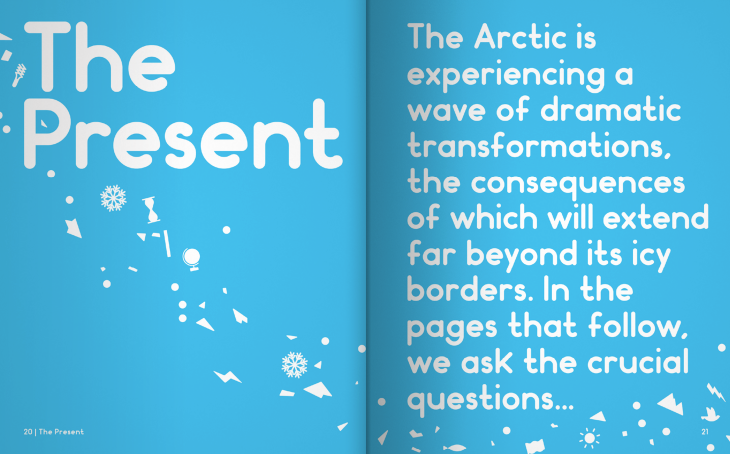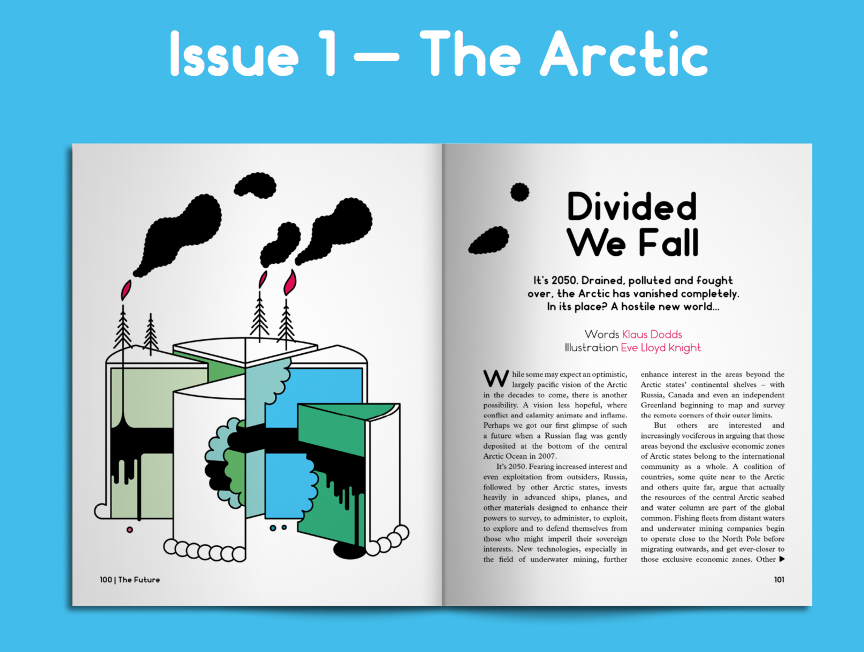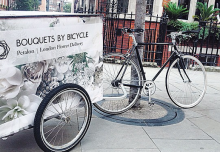Use your Weapons of Reason
Weapons of Reason is a magazine to turn knowledge into action. Its ultimate goal is to understand and articulate the interconnected issues shaping our world, and inspire its readers to take positive action. For its first issue, we start by exploring what’s happening at the top of the world, in the Arctic. As the ever looming shadow of climate change draws in, it is more important than ever that we get as many people as possible to fight back.
1. Where did the idea for Weapons of Reason come from?
Our publisher Danny Miller, who founded Little White Lies magazine as a university project, saw Al Gore speak and was inspired by his innate ability to tell important stories in a way that really resonated with people. Our team had been making magazines for years and we thought Weapons of Reason could be a way to use our creativity to connect with people all over the world.
3. What makes WOR different?
We believe people – whether our designers, journalists, or most importantly, our readers – appreciate creative boundaries. WoR is an eight-issue project, which gives it a set lifespan, and each issue looks at the past, present and future of its chosen topic, concluding with a selection of ways to take positive action.
4. How important do you think communication is to the climate change cause?
Communication is absolutely vital. Very early in the project we actually approached D&AD (who represent the global creative/design/advertising communities) to see if they’d like to partner with us and help amplify the reach of the project. The former D&AD president Laura Jordan-Bambach once said that as communicators, we’re in an amazing position to take what is intangible to the world and make it understand to everyone, which was a major inspiration for us.
It’s so easy for people to feel overwhelmed by global topics that they may not understand, so we hope to break things down and not only communicate the key issues, but ideally, inspire people to learn more and take action.
5. Who is WOR written for?
WoR is for everyone. With our past section, we wanted to create something akin to A Little History of the World, which Ernst Gombrich wrote for children using concepts they could understand. Throughout the magazine we use rich visuals and illustration to convey the complex themes and show the plethora of pertinent issues at stake in the Arctic Circle. Ultimately though, it’s for anyone who wants to know more about our world, beginning with the Arctic.
6. What will be the next editions theme?
We’re currently looking at leadership, with future issues dedicated to technology and health, amongst other huge issues that affect our world.
7. The design is very strong, was it important to have a fantastic aesthetic?
It’s always important! Our team have been busy working on projects for major clients so we wanted an outlet to express our creativity on our own terms. Our designers, Paul Willoughby and Evan Lelliott, worked tirelessly to create a clean aesthetic where everything is presented with absolute clarity, right down to the geometric typeface Evan created at the very beginning of the project.
Illustration was used widely throughout the magazine (including on the cover by the brilliant Adrian Johnson) as it allowed us to control the tone and detail of our approach. We also commissioned leading visual thinkers including Cajsa Holgersson, Jean Jullien, Anna Dunn, Eve Lloyd Knight and a new graduate called Aaron Nelson, to tackle the complicated topics in a way that hopefully, really resonate with people.
One of the goals for the first issue was to get the visual and written aesthetic locked down, to provide a template for the next seven – which means everything should be a lot easier from here on in.
8. Where would you like to see WOR after a year?
We’d love to work with even more passionate people who believe in using creativity to connect people – with big issues, with the world, and (perhaps most importantly) with each other.
An example of big business using creativity to fight climate change, Ben and Jerry, we salute you.












